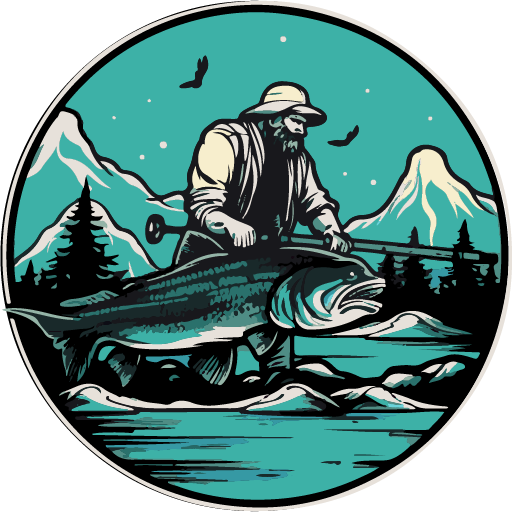Trolling from a Kayak
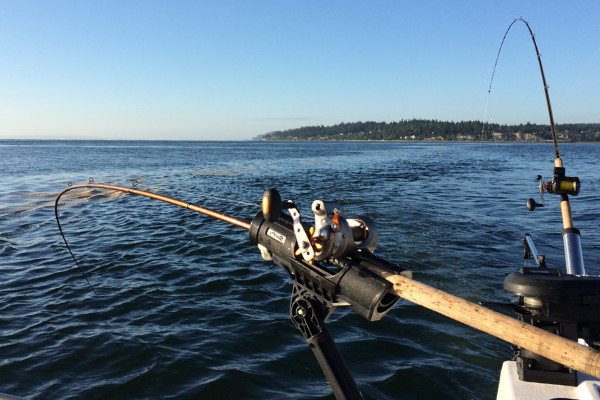
Kayak fishing is a great way to explore the waterways around you, and it can be even more fun when you go trolling from a kayak.
Trolling is a technique that anglers use to catch fish by slowly moving their bait through the water. If you’re looking to try trolling on a kayak, here is what you looking for.
In this blog post, we’ll discuss the basics of trolling from a kayak and share some tips on how to be successful. Whether you’re a beginner or an experienced angler, this information will help you take your trolling game to the next level!
Why Should you Try Trolling from a Kayak?
Trolling from a kayak can be an enjoyable and productive way to catch fish. Kayaks are more maneuverable than larger boats, so you can easily access shallow areas where fish tend to hide. Plus, trolling from a kayak is much quieter than using a motorized boat, which increases your chances of catching something.
Fishing time is precious, and trolling lures lets anglers cover miles of water quickly. With steady movements of the rod tip and a variety of speeds, trolling can be an effective method for boosting your catch rate – if you know how to do it right!
However, the technique does pose a challenge to even seasoned fishermen – making it an adventure for amateurs alike!
Your Kayak Decides the Trolling Method
If you’re looking to troll for your next catch, it’s important to recognize the capabilities of your kayak. Consider which style and type of kayak you are using, as it will affect what tactics may be available to you; some models excel at light tackle trolling while others require more power.
Additionally, think about how many rods or other accessories you have room for – multiple ones might work with certain types but not all!
Ultimately, successful fishing boils down to choosing an approach that’s tailor-made for you and your kayak: what works for one won’t necessarily work as well in any other situation!
Let’s take a look at all 3 types of kayaks and find the trolling method that’s right for you.
Paddle kayak
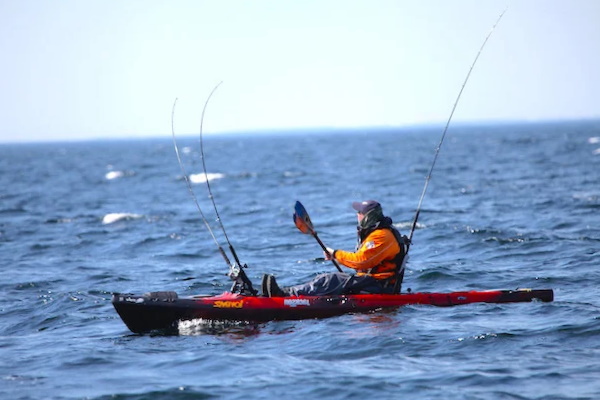
Paddle-powered kayaks are the traditional choice for novice anglers, but their limits should not be underestimated. However, it requires strength and stamina that not all of us have access to – making successful trolling in a kayak difficult without employing specific tactics.
Despite physical strength or speedy paddling prowess, managing both paddling and casting can prove too challenging for many!
To maximize trolling results from a paddle kayak, simplify and streamline your setup as much as possible; any rig that requires too many components is likely doomed from the start!
For successful trolling on a kayak, it pays to know the optimal setups:
- Light spinners or worm harnesses,
- Long-line trolling with flies, crankbaits, and spoons
- One-rod maximum to avoid drag which can hamper speed and direction control
- Small lake trolls or dodgers using minimal weight are all recommended options when it comes to achieving success while fishing from a paddle kayak.
Avoid diver setups that cause excessive drag; large weights; big dodgers: and even multiple rods – they can be difficult to manage during paddling and have greater chances of getting snagged on the bottom than lighter rigs.
Paddle kayaking with a trolling setup can be quite challenging, especially if the gear is too heavy. To have a successful and enjoyable experience on the water, ensure your trolling gear is light enough to cast behind you without sinking too quickly – or risk becoming stuck on the bottom!
Here are the specific steps:
– Paddling your kayak is the first step to trolling from a kayak – building up speed and momentum in whatever direction you intend. Once ready, it’s time for fishing!
– Cast a spinner, spoon, or crankbait behind the boat as you move along. Securely place your rod in a holder while maintaining optimal paddling velocity; taking occasional breaks to let more line if necessary.
– Although it can be tempting to free-spool your line, using a kayak trolling rig requires discipline and accuracy. To ensure you get the desired lure depth and distance behind you for optimum results, periodically keep your rod in the holder while paddling at an even pace until sufficient forward velocity has been gained – then let out some lines with controlled precision.
– As speed is reduced over time due to resistance from the water or wind directions, close off your bail or lock down on spools before resuming another speedy course of travel across open waters as part of this continuous cycle.
Pedal kayak
With a pedal-powered kayak, you can set yourself up for some serious trolling. Not just any ordinary paddle kayak – these rigs free your arms to handle gear with ease and maintain faster speeds than paddling so you don’t wear yourself out quickly.
Many pedal kayaks feature accessory tracks specifically designed for mounting rod holders and fish finders to enhance your experience even further!
Plus, their powerful drive system gives enough power that lets you troll in deep water or targets larger fishes although still having too much drag resistance getting in the way of an enjoyable time on the water – not mention being able to easily manage two rods at once!
If you’re looking to troll with pedal power, here’s a system that makes it simple:
-To effectively troll in a pedal kayak, one should first line up on their desired course and get moving with ith some speed. Begin by prepping up rods in the holders and lowering your trolling gear underwater a few feet before pedaling along on your desired course. Doing this will help build momentum for an efficient and enjoyable experience!
-With your preferred trolling speed, set the rod out of its holder and let your line extend gradually as you maintain pedaling. You might experience a pull on one side due to the setup – simply adjust accordingly with slight steering corrections!
-When at the desired depth, put back in place the fishing rod into its holder; if using two rods simultaneously, follow this process once again while properly balancing between both sides of the kayak for an optimal drift-fishing experience.
Motorized kayak
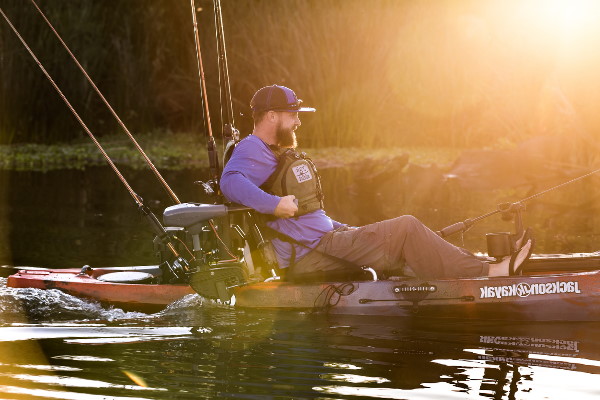
Electric-powered kayaks are the ultimate game changer and make trolling on a kayak easier than ever. With advanced features like AutoPilot navigation, Spot-Lock, and i-Pilot remote driving included in each integrated motor, you’ll be able to enjoy a day of fishing with minimal effort required.
Managing your gear has never been simpler – just set off on your course at the desired speed then let Autopilot do its thing as you drop down to fish.
For those looking at all-day usage on water invest in high-quality lithium-ion batteries; 54Ah will get the job done but 100Ah is recommended for optimal performance throughout any expedition.
Get the most out of your trolling in a kayak experience with motorized kayaking by installing adjustable rod holders close at hand. Carefully select accessories and extensions to make sure you always have quick access to grab those all-important rods – no awkward leaning required!
Choosing the Right Gear
Selecting the right tackle is essential for successful trolling from a kayak.
Rod
For kayak anglers, there is no need to invest in specialty rods – a quality casting or spinning rod will do the job. Whether you’re searching for fish closer to shore and using bait, or trolling further out with lures attached to different line weights – your everyday fishing rod can handle it!
When trolling from a kayak, anglers should choose rod lengths between 7’6″ and 7’10”. This will provide greater maneuverability than rods under seven feet for freshwater fishing.
However, if angling for saltwater species it may be advisable to opt for something closer to 8′. Similarly, extending the length to 10 feet in saltwater can make all the difference when going after a bigger game – but keep portability in mind while deciding on your perfect rig!
When it comes to trolling, both spinning and casting rods are equally effective. So don’t worry if you’re a fan of one over the other – either way, your fishing goals will be achieved!
Reel
Fishing with the right reel can make a big difference in your success rate. You don’t need to search out specialty reels for trolling from a kayak, as many of today’s standard options will do just fine. Here I will introduce you to 3 reel models that I often use for trolling with a kayak:
Line Counter Reels

For those anglers looking to track their line precisely when kayak- or boat fishing, Line Counter Reels allow fishermen to keep tabs on precisely how much line has been released as well as accurately determine depths in deeper waters while jigging.
Additionally, these devices prove especially useful for vertical jigging at great depths after lake trout and other deep-water species!
Spinning Reels

Spinning reels are versatile. For open-water applications like kayaking, many fishermen opt for spinning reels which are lightweight and can easily manage any kind of lure.
Look for those with sufficient drag systems to keep up with even the most powerful of fish. Additionally, make sure the handles offer a secure grip and remain comfortable during extended use.
Baitcasting Reels
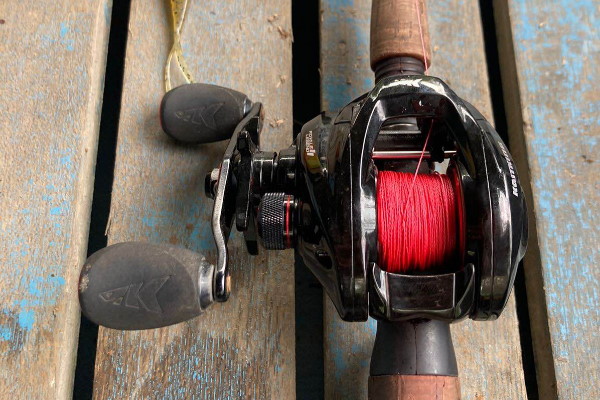
Baitcasters should have a smooth cast with minimal backlash and snags during retrieval. Furthermore, check for proper spool tension settings before heading out to prevent line slipping when facing bigger fish!
Line
When trolling, anglers should select lines that can handle the pressure of big fish while remaining relatively invisible in the water. Lead Core Line, monofilament line, and Braided Line are excellent options when seeking out a great line selection for trolling from a kayak.
Lead Core Line
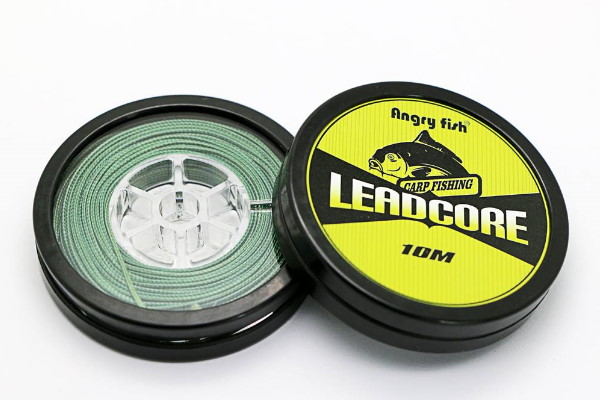
For anglers needing to troll deep, having a lead core line is key. It may be the difference between success and failure – particularly when fishing lake trout. With your lures descending quickly even in deeper waters, you will have better odds of reeling them in!
Lead core colored line harnesses the power of a lead inner core to swiftly sink and reach greater depths than regular mono lines, while its visible color-coded sections allow anglers to effortlessly monitor how much of their line they’ve let out. It’s also made with a strong dacron sheath that effectively supports any lure used – an ideal partner for crankbaits, jigs, or spoons!
Monofilament Line
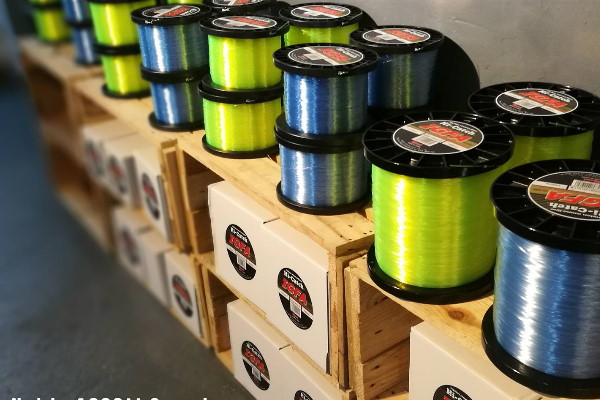
Monofilament fishing line is an essential tool for any angler, offering a range of vibrant shades from clear and green colors up to fluorescent white hues. This single-strand plastic offers buoyancy not found in other lines. This versatile product can be used with all kinds of lures from topwater hard baits to hard baits at a neutral depth – ensuring no matter what your technique or target species, monofilament will come through in style! For those who prefer trolling too, mono is suitable for shallow-depth waters as it has been favored by experienced fishermen over many years.
Braided Line
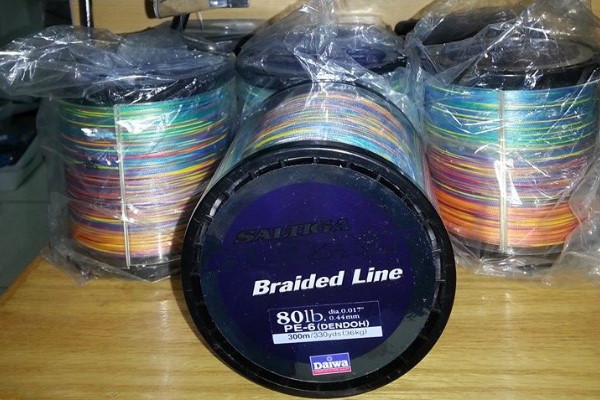
The braided line is perfect for trolling, as it provides strength and minimal visibility in the water. It’s also much more abrasion-resistant than other lines due to its tight weave, making it difficult for fish to bite through the line.
Braided fishing lines offer a range of advantages over standard monofilament options. Constructed from nylon, Dacron, or Spectra (polyethylene), these specialized products are thinner than mono and have less water resistance, allowing lures to run deeper. It offers extraordinary advantages like cutting through vegetation easily.
Furthermore, due to its lack of stretch compared with monofilament varieties of the same pound test strength, anglers will experience firm hook sets while they are out on the waters.
Plus you’ll get even more out of it because its small diameter allows for spooling large amounts onto reels while extending lures further away from kayaks – all without any compromise on performance!
Rod Holder
Rod holders are a must-have when it comes to trolling. They keep anglers’ hands free and make sure the rod doesn’t slip out of your grip – crucial in rough conditions.
Look for adjustable or telescoping rod holders that can be mounted directly onto your kayak, allowing you to angle them perfectly according to the situation at hand. And don’t forget, having several of these on board will help you tackle multiple lures simultaneously – something I strongly recommend!
These rod holders should have secure locking mechanisms as well as anti-slip surfaces, so they can stay in place while holding up against whatever Mother Nature throws at them.
Trolling Rods Behind You
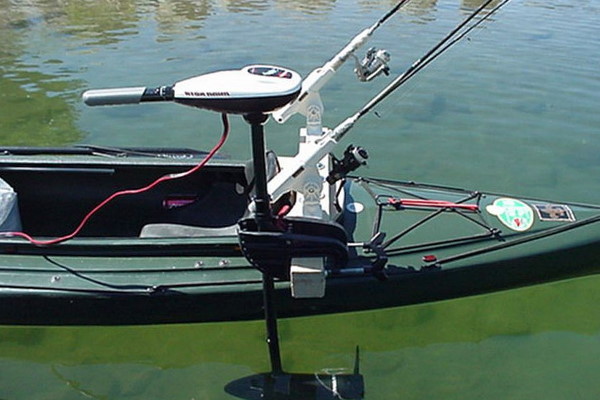
Utilizing rod holders behind you, anglers can now easily troll their lines while paddling. To ensure no prize catches slip away due diligence should be taken to set your drag light so that when a fish bites, the line pulls out slightly because you don’t have direct line-of-sight access to your rods at all times.
Trolling Rods in Front of You
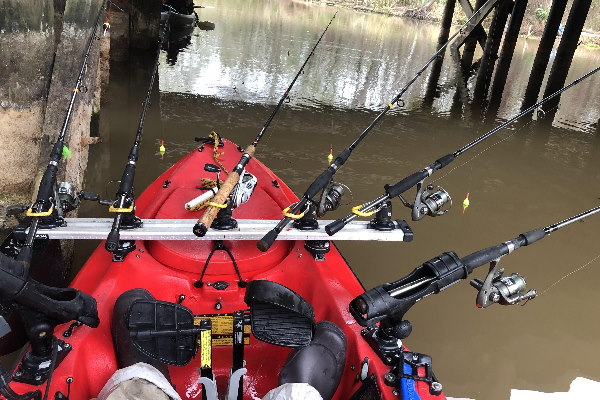
Enjoy an exhilarating fishing experience with trolling rods placed in the perfect spot – right in front of you! Strategically mount your rod holders far enough to not impede paddling movements, yet close enough for quick access when a strike is detected.
This way you can keep a constant eye on the rods as you traverse and be ready to act when bites come – transitioning from gently gliding through the waters to fighting against fish without missing a beat!
To be extra safe and secure, it’s best to set the drag on your rod a bit lighter than usual. That way, when you feel that all-important tug from an eager fish below, there’ll still be time for you to adjust the settings as needed; no need to risk losing your gear!
Taking additional precautions such as using a fishing pole leash can also help prevent accidental misfortunes. This way you can rest easy knowing that even if an aggressive catch gives it its all, there won’t be any surprises!
Of course, there is much more involved with successful trolling than just equipment selection — you’ll need to consider boat speed, lure placement, and other variables. But with the right trolling gear in hand, you’ll have all the tools necessary to have a successful trolling adventure out on the water!
Lures
The type of lure you choose ultimately depends on the species or habitat you’re targeting. Trolling lures come in all shapes sizes and colors; from spoons to spinners, jigs to crankbaits – there’s something for every situation. In general, shallow-running lures will be best for near-surface trolling, while deeper divers will appear more attractive to fish that reside further below.
When it comes to selecting the right lure weight, consider two elements: depth and desired water column. Experimentation is key and conditions can vary from day-to-day; however, when angling shallow waters (under six feet,) a lighter half-ounce or less may be best so lures are not hitting bottom. For intermediate depths between six and 20 feet deep, consider various weights up to an ounce for optimal coverage at varying depths.
Regardless of the species, you’re after, just remember the slower your speed and bigger your lure, the better chance you have of hooking a fish!
Fish Finder
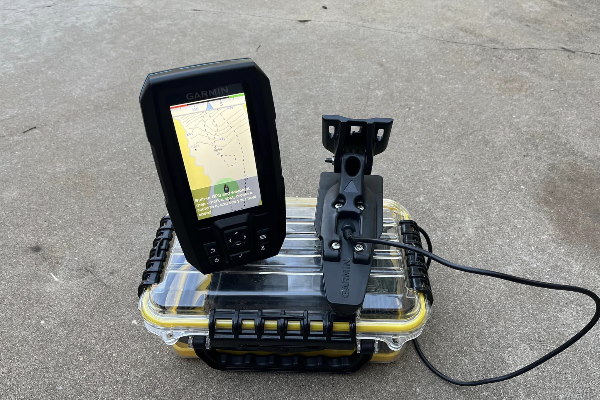
A fish finder is a must-have accessory for any kayak angler, providing real-time data on depth, water temperature, and other important information. Knowing where the fish are can help you locate optimal spots to cast your lines.
Fish trackers also feature sonar technology that capability of detecting structures such as submerged logs or sunken rocks – prime hiding places for hungry predators!
No matter what type of fishing you are doing, a fish finder should be part of your arsenal when it comes to fishing from a kayak. It’ll make sure you’re always one step ahead of the game and equipped with the knowledge needed to land that big catch!
Tips and tricks
Control Your Speed
Trolling from a kayak is a delicate art. The difference between catching nothing and reaping abundant rewards can be as slight as changing your pace – try speeding up or slowing down, utilizing S-turns or stop-and-go tactics to convert curious fish into biting ones!
Experimentation with different speeds could mean more catches than ever before so become an expert on the water today.
Mastering trolling speed in a kayak is essential for reaping rewards from finny prey. Vary your speeds to see which works best– slightly faster or slower, depending on the day’s conditions and disposition of fish.
Monitor, when you get bites and land, catches – this could be crucial information regarding how much momentum produces winning results! Don’t forget that water depth can also depend upon lure weight: keep track as you move along too.
What is the ideal trolling speed for kayak fishing? Each kayaker has their preferences on the “right” pace. I like to keep my movement between 1.5 mph to 3.5 mph depending on if I’m going with or against the current for an optimal outcome when fishing – this ensures that your lure will move in a natural way which they can easily attack!
Experiment with Depth
Maximizing your success as an angler requires careful consideration of both speed and depth. Dynamic variables like fish behavior can alter the location between the bottom, mid-water column, or top – so it is important to experiment with various depths for maximum returns on bites. Don’t forget to adjust the line weight accordingly too! When you find a spot that works, log details so you have a successful blueprint for future casts!
Utilize Multiple Rods
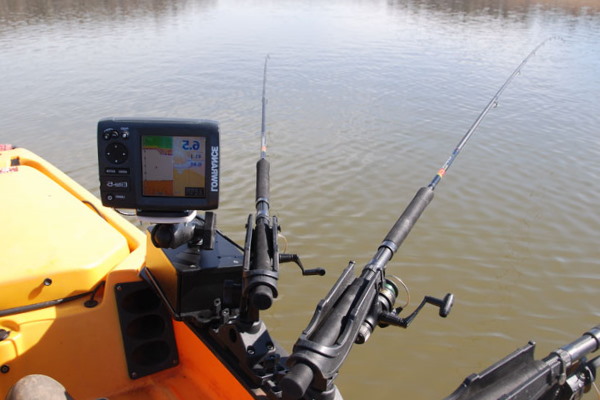
Fishing from a kayak can be an exhilarating way to enjoy the outdoors, but it is important to ensure you are equipped for success. Paddlers should stick with one rod as two rods make maneuverability more difficult.
Those in the pedal and motorized boats, however, should consider having multiple rods rigged for different weights, lures, and lines. Doing so allows them to experiment more effectively and make faster adjustments if needed. Two or even more rods can be an advantage – enabling anglers to troll with one line while casting out the other simultaneously; thus increasing time spent fishing as well as potential catches!
To maximize your chances of a full stringer, it’s best to employ the divide-and-conquer strategy when fishing for trout and kokanee. Aim one rod in shallow water while running another at depths indicated by consistent fish readings on your sonar – don’t forget that surface-level dwellers won’t show up on a graph! With this approach, you’ll have more opportunities to target different feeding patterns simultaneously so those limits will come sooner rather than later.
Know Your Body of Water
When fishing in open water, choose a heavy rig to sink rapidly and get your lures below the surface. But in shallow or debris-filled waters, a heavy rig could be counterproductive given the greater risk of snags. Knowing exactly what lies beneath can make all the difference between coming up empty-handed or filling your bucket with fish!
Take Advantage of Stealth
Kayak fishing offers a unique advantage over using larger boats – stealth. In shallow waters, fish can panic and scatter at the slightest disturbance from large motors or wakes. With kayaks, however, anglers have an opportunity to slip into previously inaccessible areas with minimal disruption of wildlife activity below the surface.
The low-noise motor and small hull size make the presence of a kayak less noticeable to fish than that of other vessels, allowing them to quickly resume normal activity after passing by – taking advantage of this opportunity is sure to increase success when trolling with a kayak in shallower areas!
With stealthy kayak fishing, anglers can get up close and personal with baitfish schools without spooking their targets. This provides multiple opportunities to adjust trolling speed or modify lures until the right combination is found – resulting in trophies being reeled in!
Take Advantage of the Wind to Troll in a Kayak
The Wind Parallel to the Shore
Start your fishing day off right by seeking out a shoreline with the wind blowing parallel. With this perfect combination, you’ll be all set to bait up and reel in that prize catch! Set up your rig and bait before beginning at one end of the coastline for trolling fun – but don’t forget; always go downwind from where you began.
Paddle and Troll in the Wind
Experience the thrill of kayak trolling and feel each wave beneath you as you paddle into the wind. Estimate your distance from the shoreline and stay consistent while making your journey. Keeping equal distance from shore for an ideal line of reference.
Peering down to discern water depth or extending a paddle’s reach to judge water depth throughout your journey back and forth across the lake’s surface.
Troll Back With the Wind
To maximize your trolling with a kayak experience, when you reach the end of the section you’re fishing be sure to move out about 10 feet from shore and let the wind “drift” you back down. Doing this allows access to deeper water which can contain hidden structures and depths that may hold unsuspecting fish. So don’t miss out on an opportunity for a successful catch – troll with the wind!
Whether it’s a light breeze or gusting wind, sometimes trolling your line can be tricky. To slow down the drift and get back to fishing effectively, there are two main strategies: paddle control and employing a drag sock with buoy float.
The former involves slight adjustments in position using your paddle while moving further away from shore; whereas the latter is used for slowing the boat speed when conditions become more intense. If done right you’ll soon begin getting hits on those lines – hooray!
Once that happens you will have an idea of just how deep to keep casting based on where exactly alongshore you positioned yourself earlier on!
Keep safe
It is always important to stay safe while out fishing in the open water. Be sure you are wearing a life jacket and that all your safety gear is readily accessible, as well as familiarize yourself with the local regulations on what type of fish can be taken.
Finally, keep an eye on the weather conditions around you and plan your trip according to those forecasts – this will help ensure a safe and successful day! Good luck!
Problems You Will Encounter
Wind
Trolling in a kayak in windy weather can be a challenge for kayak anglers, making it difficult to stay on course and maintain speed. Lightweight boats are especially susceptible to gusts of 5-10 mph or more. But with the right strategy – such as using the wind at your back while keeping an eye on how fast you’re going – savvy fishermen can make use of breezy conditions instead of avoiding them altogether.
Pedal or motorized vehicles are more suitable for tackling rougher weather conditions than traditional paddle designs; however, caution must still apply as rough waves could easily capsize a boat even with advanced craftsmanship involved!
Tides and currents
Tides and currents can also affect your fishing success, making it difficult to stay on course.
Utilizing the power of saltwater tides and river currents can be an effective means to catch more fish. Fish will often move against these natural occurrences, therefore presenting your bait or lure in this direction maximizes its visibility, and more fish will be exposed to your equipment this way.
While some days may call for going against the flow, cutting an angle that follows it provides optimal coverage with less labor involved – making sure you adjust lure speed accordingly!
Drag
Kayakers must stay aware of the drag created by their lures, as it has a significant impact on navigation. Whether it’s a small spinner, these rigs can disrupt your vessel’s course. Especially when the rod is perpendicular to the direction of travel, drag tends to pull your boat to one side. High-drag setups like large lake trolls, salmon dodgers, heavy weights, and divers can quickly pull your craft off course. Of particular note are downriggers that generate considerable resistance in the water that should not be ignored!
Paddle kayaking can be hampered by drag, but with a few techniques, you’ll have your watercraft on the straight and narrow. Before letting out gear from your paddle kayak, try paddling harder on the side which is closest to where the rod points – this will help keep it steady despite increased weight.
Thankfully for pedal and motorized vessels though, less effort needs to go into counteracting potential drag!
Hazards
It’s important to be aware of any potential hazards before heading out into open water. Keep an eye out for debris like logs or branches that may have been washed up from the shore, as well as submerged rocks or other obstacles that could cause damage to your craft if not avoided. Be sure to follow all boating regulations when navigating waterways that may be congested with other vessels.
In addition, always keep a lookout for approaching storms or lightning – ultimately, it’s best to resume kayak fishing when the conditions are more favorable.
Finally, one of the greatest threats to anglers is hypothermia – ensure you have proper clothing and supplies on hand to stay warm and safe for the duration of your trip.
High Waves
Finally, high waves and choppy waters can be a challenge for even the most experienced kayakers.
When the waves are high, it can be difficult to maintain a consistent trolling position. Employing a drag sock with buoy float may help slow down the drift and allow for better control of your kayak.
Tangling Fishing Lines
Tangling fishing lines is a common problem when trolling from a kayak, with multiple rods and lures in the water. You can prevent tangles by keeping your line lengths equal and using different colored weights or floats to distinguish between lines. This will help avoid confusion when trying to figure out which line is which!
It is important to take regular breaks throughout your fishing session to unravel any tangles that might have occurred while out on the water.
Conclusion
Kayak trolling is a great way to cover more water and find fish that are hiding in deeper, offshore waters. If you haven’t tried trolling from a kayak, we encourage you to do so.
You may be surprised at how well it works. Be sure to use the right gear and follow our tips and tricks to make the most of your experience. And if you run into any problems, we’ll be here to help. So get out there and start trolling!
Thanks for reading our article. If you have any questions, leave a comment below. You can see more posts on our website here.
Further reading:
